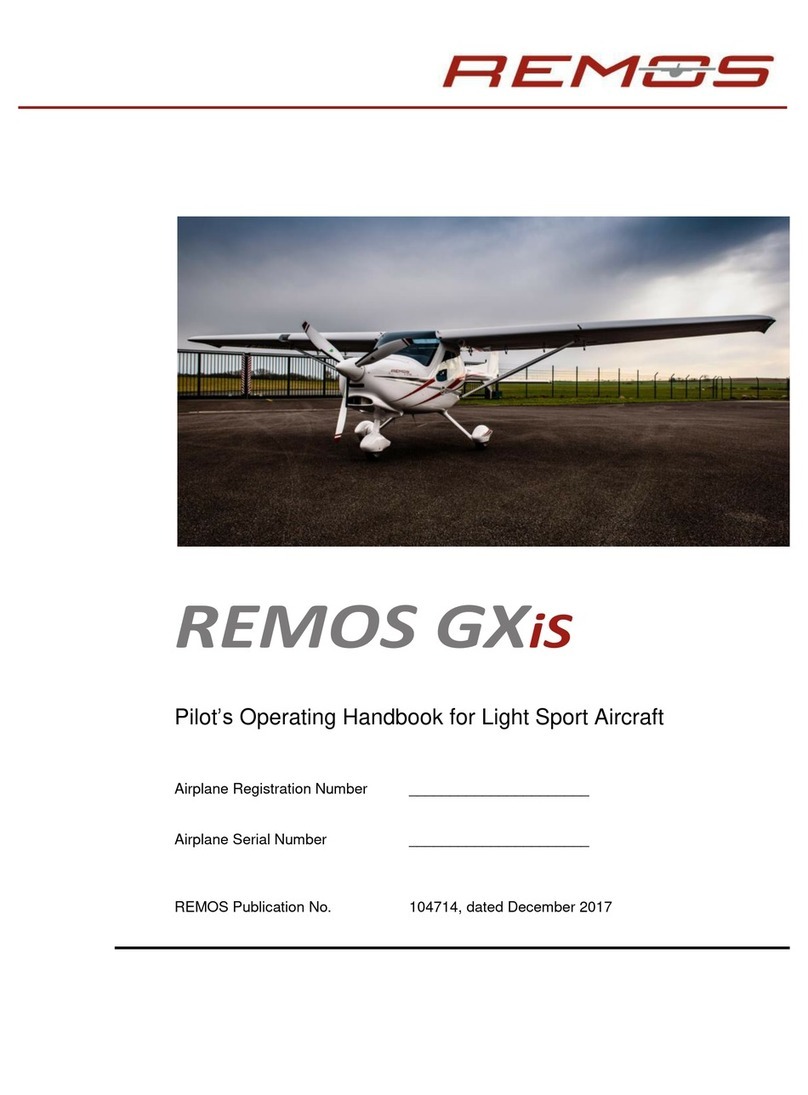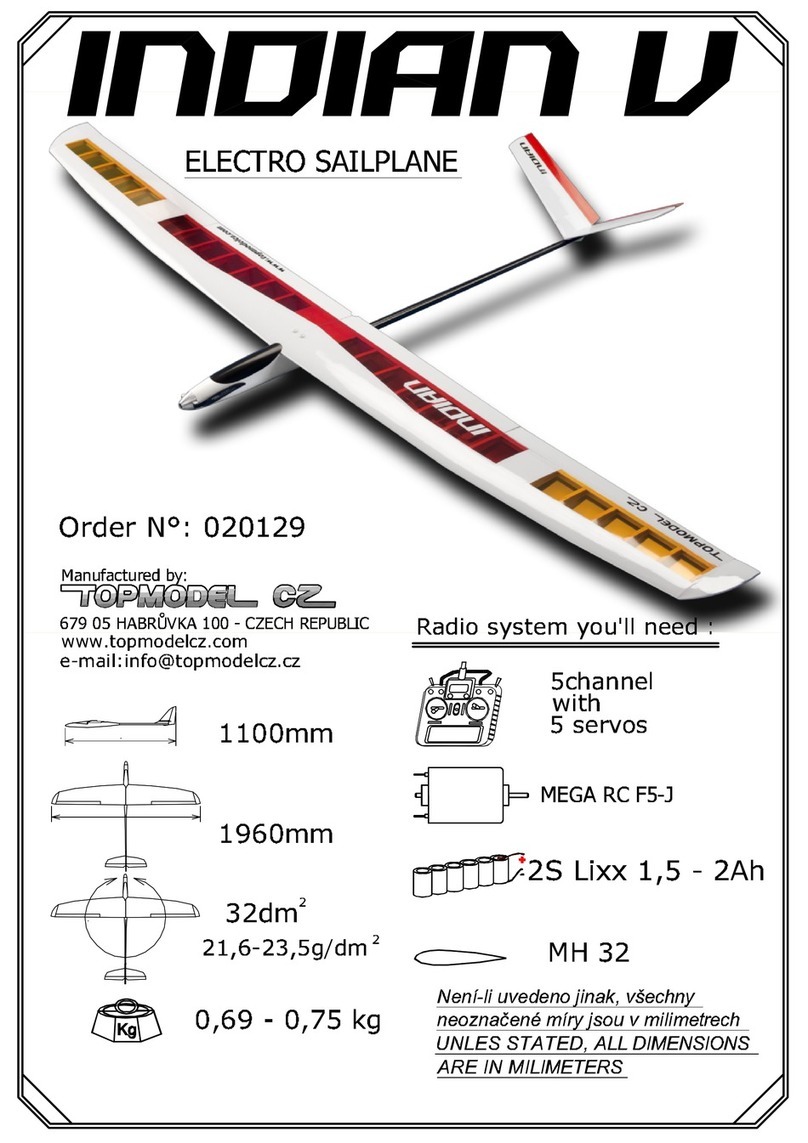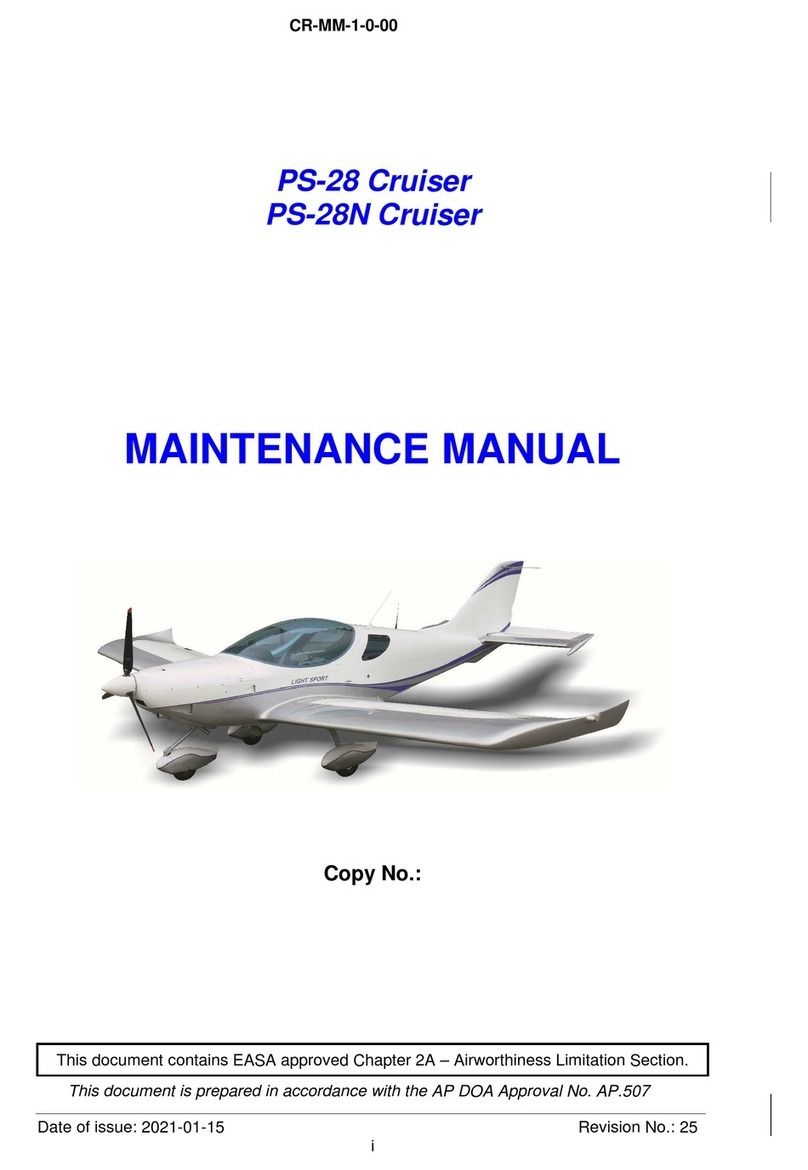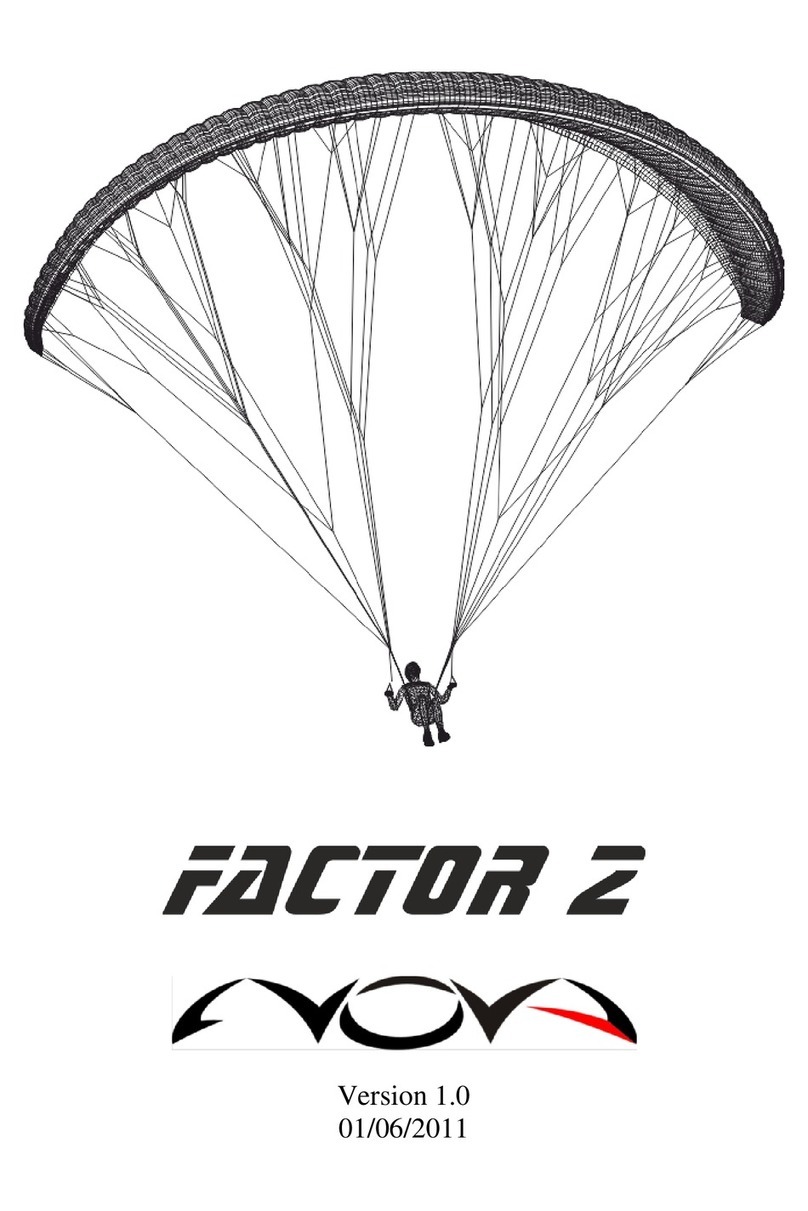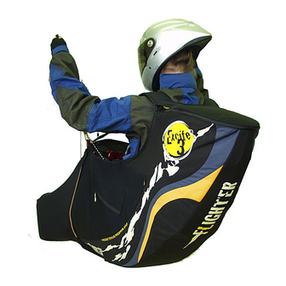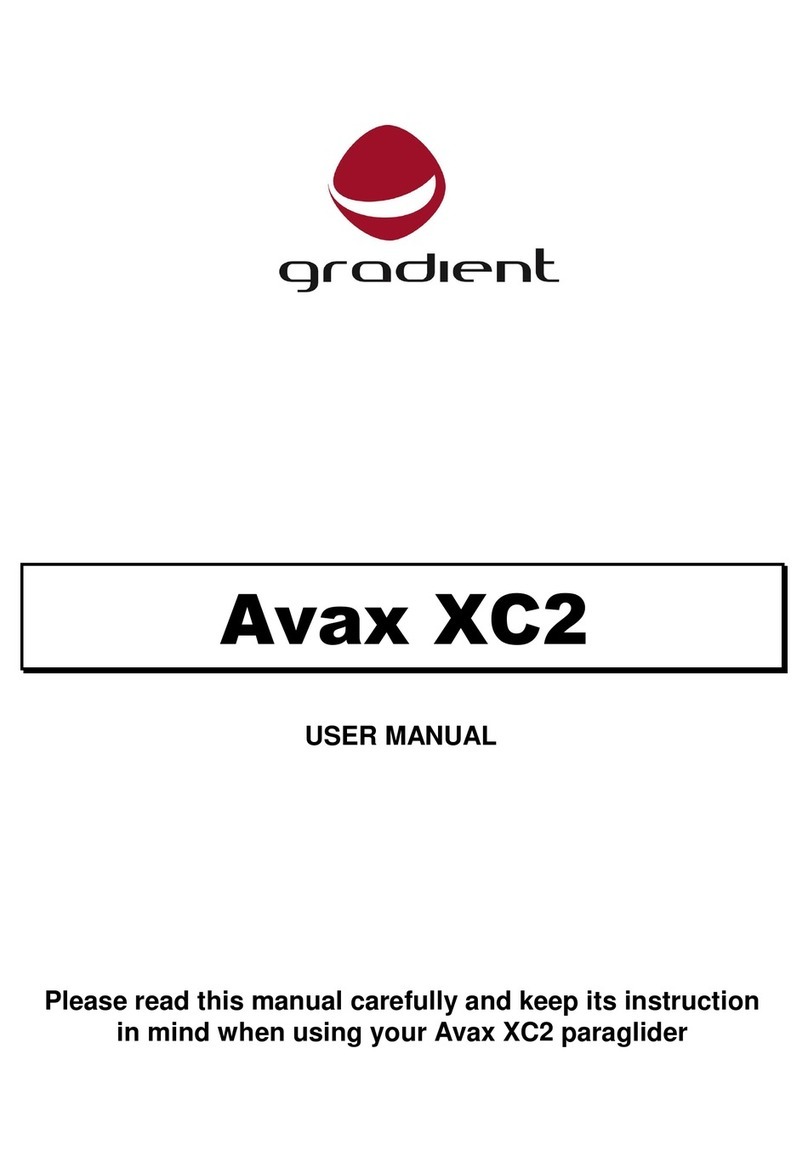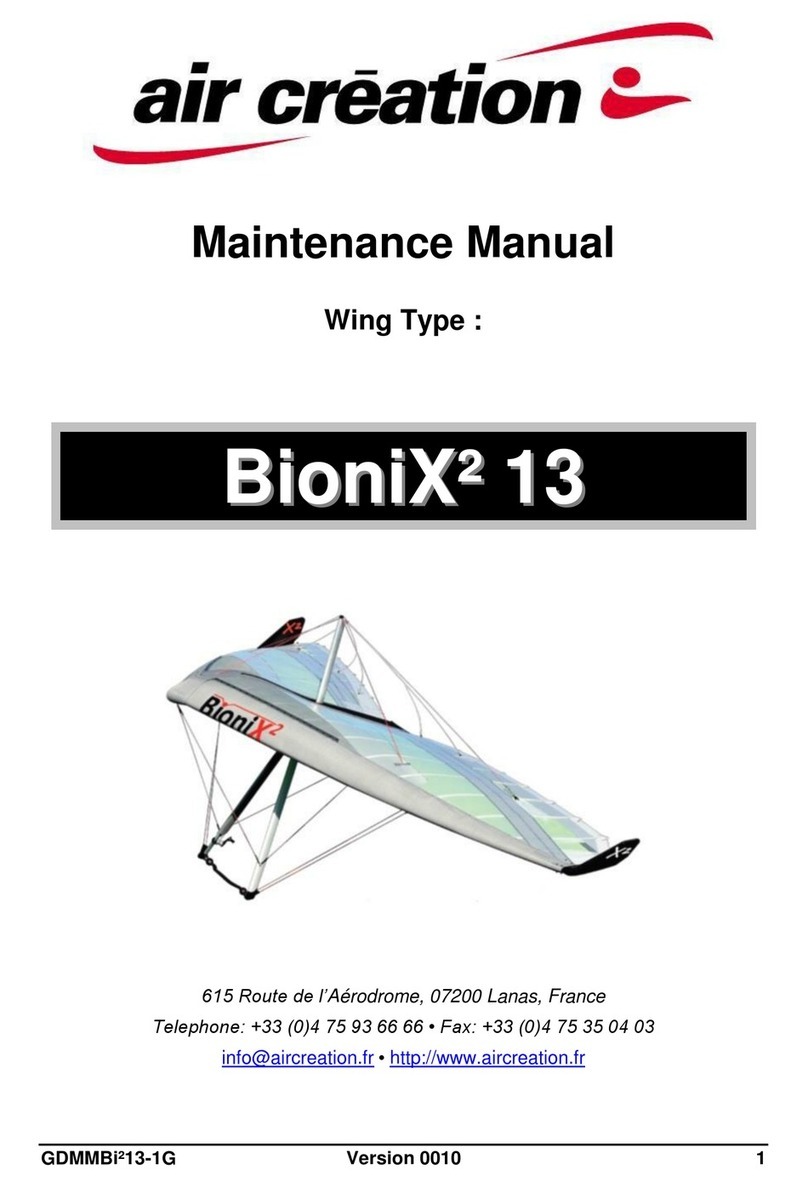SRP Lynx FarScight Technical specifications

AFM 4-2
Lynx
FarScight
Unmanned Aircraft System
Aircraft Flight Manual
www.SRP.aero

AFM 4-2
Record of Revisions
AFM 1-1 14 April 2013
AFM 1-2 27 July 2013
AFM 1-3 20 July 2014
AFM 1-4 1 September 2014
AFM 2-1 1 January 2015
AFM 2-2 28 February 2015
AFM 2-3 08 March 2015
AFM 2-4 21 April 2015
AFM 2-5 20 August 2015
AFM 2- 04 December 2015
AFM 2-7 1 December 2015
AFM 2-8 04 January 2015
AFM 2-9 30 April 201
AFM 3-1 12 August 201
AFM 4-1 1 June 2017
AFM 4-2 2 July 2017

AFM 4-2
Table of Contents
Section 1: General Information and System Description..............1
Lynx...................................................................................................................................................1
Airframe..........................................................................................................................................1
Flight Control Surfaces..................................................................................................................1
Propulsion System.........................................................................................................................2
Takeoff and Landing......................................................................................................................2
Avionics..........................................................................................................................................2
Payloads........................................................................................................................................2
Communications Equipment..........................................................................................................2
Swift GCS..........................................................................................................................................2
Information Displays......................................................................................................................3
GCS Units......................................................................................................................................3
Preflight..........................................................................................................................................4
Mission Planning............................................................................................................................4
Moving Base..................................................................................................................................4
Handheld Transmitter........................................................................................................................4
Flight Modes......................................................................................................................................5
Guided............................................................................................................................................5
Auto (Waypoint Navigation)...........................................................................................................5
Rally...............................................................................................................................................5
Cruise.............................................................................................................................................5
Manual...........................................................................................................................................
Changing Autopilot Modes.............................................................................................................
Safety Devices...................................................................................................................................
Throttle safety key..........................................................................................................................
Arming Checks...............................................................................................................................
Takeoff Button................................................................................................................................
Battery Monitor...............................................................................................................................7
Manual Control...............................................................................................................................7
Low Voltage Cutoff and Current Limiter.........................................................................................7
Flight Termination..........................................................................................................................7
Failsafes.............................................................................................................................................8
Rally Points....................................................................................................................................8

AFM 4-2
Battery Failsafe..............................................................................................................................8
GCS failsafe...................................................................................................................................8
RC Failsafe....................................................................................................................................8
Section 2: Performance and System Limitations.........................9
Prohibited Maneuvers:.....................................................................................................................10
Section 3: Getting Started......................................................11
Swift GCS........................................................................................................................................11
Install Swift GCS..............................................................................................................................11
Updating the Autopilot Firmware.....................................................................................................11
Section 4: Mission Planning....................................................13
Survey..............................................................................................................................................13
Altitude.........................................................................................................................................13
Heading........................................................................................................................................13
Overlap and Sidelap....................................................................................................................13
Lead In and Overshoot................................................................................................................14
Statistics.......................................................................................................................................14
Rally Points......................................................................................................................................14
Section : Deep-Stall Landing.................................................1
What is a Deep-Stall?......................................................................................................................15
Landing Options...............................................................................................................................1
Auto Deep-Stall............................................................................................................................1
Manual Deep-Stall.......................................................................................................................18
Deep-Stall Abort..............................................................................................................................18
Selecting a Landing Spot.................................................................................................................18
Auto Deep-Stall Checklist................................................................................................................19
Manual Deep-Stall Checklist............................................................................................................19
Deep-Stall Abort Checklist – Manual...............................................................................................20
Section 6: Post Flight.............................................................21
Powering Off Checklist....................................................................................................................21
Photo Tagging..................................................................................................................................21
Section 7: Emergency Procedures...........................................23
Low Flight Battery............................................................................................................................23
Handheld Transmitter Low Battery..................................................................................................23

AFM 4-2
Motor Failure Checklist....................................................................................................................23
Uncontrolled Flight Checklist...........................................................................................................24
GPS Failure Checklist......................................................................................................................24
GCS Crash Inflight...........................................................................................................................24
Section 8: Con*guration.........................................................2
Flight Modes....................................................................................................................................25
Failsafe............................................................................................................................................25
Moving Base....................................................................................................................................25
Section 9: Troubleshooting.....................................................26
Downloading Autopilot Logs............................................................................................................2
Swift GCS Logs................................................................................................................................2
Compass Calibration.......................................................................................................................2
Accelerometer Calibration...............................................................................................................2
Failing the ‘Deepstall - Test’ in Swift GCS.......................................................................................27
Exhausted Camera Battery Inflight..................................................................................................27
Telemetry Connection Problems.....................................................................................................27
Warnings..........................................................................................................................................28
Arming Errors...................................................................................................................................30
Section 10: Scheduled Maintenance........................................31
Servo Replacement.........................................................................................................................31
Section 11: Repair Instructions...............................................32
List of Common Replacement Hardware.........................................................................................32
Tools and Spare Parts Layout.........................................................................................................33
Replacing a Propeller......................................................................................................................34
Replacing a Broken Wing Bolt.........................................................................................................34
Replacing a Tail/Wing Clip...............................................................................................................35
Replacing the Motor.........................................................................................................................3
Replacing a Servo...........................................................................................................................38
Replacing a Skid Pad......................................................................................................................39
Repairing Wing Delamination..........................................................................................................40
Appendix I............................................................................42
ESC Beep Codes.............................................................................................................................42
Appendix II...........................................................................43

AFM 4-2
Battery Cell Discharge Curve..........................................................................................................43
Appendix III.........................................................................44
Autopilot Carrier Board LED Codes.................................................................................................44

Section 1: General Information and
System Descri tion
Lynx
Lynx is a hand-launched UAS designed for aerial surveying and mapping.
Airframe
Lynx weights 2 kg without battery or payload and has a 2.3 meter wingspan. The airframe consists
of five major parts:
Fuselage
Stabilator (movable tail)
Center Wing
Right Wing
Left Wing
The fuselage, wings, and stabilator are constructed of Kevlar over a foam core. Foam landing pads
are fitted beneath the fuselage to absorb energy for deep-stall landings. The main airframe
components are assembled without tools. Spare parts and sub-components can be replaced in the
field using basic tools, supplied in the aircraft’s tool kit.
Flight Control Surfaces
Lynx uses only two control surfaces: a rudder and stabilator. The rudder is a vertical control surface
used to roll and yaw the airframe left and right. The stabilator is used to pitch the airframe up and

AFM 4-2
down in order to climb or descend to a desired altitude. For the deep-stall landing, the stabilator will
deflect upward, beyond what is used for normal flight, to induce a deep-stall. Both control surfaces
are actuated by servo motors.
Pro ulsion System
The propulsion system consists of the flight battery, brushless motor, electronic speed controller
(ESC), and propeller assembly. The propeller folds back to prevent damage upon landing and is also
folded for transport. Lynx uses a high density, rechargeable 9Ah S lithium ion (Li-ion) battery. The
battery is paired as two 9Ah 3S packs to comply with airline and shipping regulations. Operating
voltage is 1 .2 to 25.2 volts.
Takeoff and Landing
Lynx uses a hand launch takeoff wherein the aircraft is physically thrown. Once thrown, the aircraft
climbs autonomously and proceeds to its first waypoint. The takeoff is activated by pressing the
takeoff button on the fuselage once the preflight is complete.
The landing is called a deep-stall and enables flights from confined areas. Specifically, a deep-stall
is a near-vertical descent caused by deflecting the stabilator upward while in flight to roughly 45
degrees. During the descent, throttle is reduced to zero and the tail remains defleted. Lynx is steered
during the descent by the autopilot or by the safety pilot if landing manually. Unlike a parachute, the
deep-stall can be aborted to resume flying as needed.
The wings and stabilator are designed to separate from the fuselage upon landing impact. This is
done to minimize damage by dissipating energy when landing on a hard surface. In extraordinary
landings, certain breakaway spare parts are designed to fail to prevent damage to airframe
components.
Avionics
Lynx uses the Pixhawk 2.1 autopilot running the ArduPilot flight stack. The autopilot contains the
following sensors:
3 Three-axis Inertial Measurement Units (IMU)
2 Barometers
L1/L2 PPK capable GNSS
Airspeed and magnatometer
Payloads
Lynx can carry a variety of swappable cameras. Cameras are triggered in flight by the autopilot while
flying a survey mission.
Communications Equi ment
Lynx utilizes two control frequencies. The safety pilot’s controls are transmitted with a handheld
transmitter on 2.4 GHz (RC Link). A two-way data radio on 915 MHz is used for communication
between the ground control station (GCS) and the aircraft.
Swift GCS
The ground control software used with Lynx is Swift GCS. Swift GCS is the operator’s interface to
the aircraft. Using the GCS, the operator configures the aircraft for flight, plans the mission,
uploads/downloads waypoints from the autopilot, and monitors aircraft status and position. Swift
2

AFM 4-2
GCS is designed to work with touch screen laptops and tablets for improved field use. Standout
features include a built-in preflight, point and click waypoint navigation, automatic survey grid
generation, built in geo-tagging, support for KML importing (Google Earth overlays), and terrain
visualization.
BETA DISCLAIMER: Swift GCS provides a greatly enhanced operational experience with Lynx when
compared to the other GCS options available, but it is still in beta testing. If you encounter crashes, bugs
or have a feature request please contact [email protected]
Information Dis lays
Swift GCS has five major displays in addition to the moving map: a Heads-Up Display (HUD), an
expandable messages panel, top status bar, bottom status bar, and wind indicator. The HUD
displays aircraft attitude information similar to manned aircraft. The messages panel display will
show both messages from the autopilot, such as a change in flight modes, and warnings. Active
warnings will be highlighted in red. If the warnings panel is collapsed when a new warning activates,
it will automatically open. The top status bar displays GPS, telemetry, flight battery, and camera
information. The bottom status bar displays the aircraft’s current location, distance to the next
waypoint, distance from home, and the distance between a user’s last two clicks.
GCS Units
Units of distances and altitudes displayed in Swift GCS are in meters unless otherwise noted as
kilometers. Velocities (airspeed, ground speed) are in meters per second (m/s).
3

AFM 4-2
Preflight
Swift GCS features a built-in checklist that guides the user through the preflight process. This is
done with a series of manual and automated checks. Each preflight step features an optional
expanded information section to help new users and display relevant information.
Mission Planning
A large portion of the preflight revolves around mission planning. This is done by creating waypoints
that the aircraft will fly to or actions to be performed. Waypoints are uploaded to the autopilot via the
telemetry radio and can also be uploaded while in flight if a mission needs to be adjusted.
Moving Base
Swift GCS is capable of reading the GPS position from a GPS equipped laptop or tablet and
displaying it on the map. This is referred to as moving base and can be quite useful for situational
awareness while in the field, especially if are moving around. If moving base is enabled, your
position will be indicated on the map with a pedestrian icon. The bottom status bar will now indicate
the distance the aircraft is from the base, rather than the distance from home.
Handheld Transmitter
The handheld transmitter is used to fly Lynx manually or in an autopilot assisted flight mode.
Additionally, it is used for the following: preflight checks, changing autopilot modes, initiating or
aborting a manual deep-stall landing, steering during a manual deep-stall landing, and stopwatch
timer.
4

AFM 4-2
Flight Modes
Lynx can be controlled in two ways: manually or under autopilot control. The safety pilot determines
who is in control with a mode switch on the handheld transmitter and can therefore override the
autopilot in flight if desired. Manual control bypasses the autopilot and allows for full range of aircraft
movement. In an autopilot controlled mode, the autopilot is navigating and commands are sent with
Swift GCS.
Guided
The Guided flight mode is a 'fly here' mode. In Guided, the operator chooses a location and altitude
to loiter at. The aircraft will loiter at this spot until one of the following occurs: the Guided location is
moved, the flight mode is changed, or a failsafe is triggered. Guided is the operator’s primary way of
moving Lynx without the need to plan or upload waypoints. It can also be useful for interrupting a
mission or avoiding other traffic.
To enter Guided, select the Guided button from the right hand side of the map in Swift GCS. Then,
tap the point on the map where you wish to fly. The GCS will prompt you to confirm the altitude and
the desired loiter direction.
The Guided location on the map can be changed by dragging the waypoint on the map. Once in
place, the altitude and loiter direction can be adjusted by tapping the Guided button.
Auto (Way oint Navigation)
The Auto flight mode is used for flying a preplanned mission (waypoints), including takeoff and
landing. In this flight mode, the autopilot will follow the mission the operator has planned in advance,
flying through all waypoints in sequence. Once the mission is complete, the aircraft will change flight
modes to Rally automatically. In flight, the operator can select specific waypoints to fly to within the
mission using the Auto menu within the GCS, or restart the mission entirely. For more information
about planning a mission, see Section 4: Mission Planning.
Rally
The rally flight mode is automatically used when the aircraft completes its mission, a failsafe
activates, or if the Rally flight mode is commanded by the operator. In this flight mode, the aircraft
will navigate to the nearest Rally point within 5 kilometers, and loiter around it until commanded to
preform some other action by the operator. If no Rally point is within 5 kilometers of the current
aircraft position, the aircraft will fly to the home waypoint, and loiter above it at 100 meters.
Cruise
Cruise is an autopilot assisted mode that allows the safety pilot to fly the aircraft with stabilized
inputs. The autopilot will interpret the safety pilot's controls and translate them into a desired
heading, altitude, and airspeed. To increase or decrease the airspeed, use the throttle stick to adjust
between minimum and maximum. The autopilot will ensure that the aircraft maintains a minimum
airspeed such that the aircraft will not risk stalling. The rudder and elevator stick are used to
command a change in altitude or heading.
If the safety pilot has touched the controls within the last half second, the aircraft will maintain its
current heading. This heading will compensate for the effect of any crosswind, allowing the safety
pilot to simply line up the aircraft with a desired direction.
Cruise mode is suitable for allowing the safety pilot to take immediate action and/or to alter the flight
path. In Cruise, the aircraft operates within a well-defined easy to fly flight envelope. As such, Cruise
5

AFM 4-2
mode is a good alternative to manual control for novice safety pilots or those lacking RC airplane
experience.
Manual
The manual flight mode provides the safety pilot with manual control of the aircraft. This bypasses all
forms of autopilot stabilization, and cannot be interrupted by the GCS operator. In this mode the
safety pilot is responsible for flying the aircraft like an RC airplane. This gives the safety pilot the
most control for any emergency scenario, and allows rapid alteration of the flight path.
Compared to Cruise, Lynx will seem very agile when flown in manual and will be sensitive to control
inputs. If the safety pilot is unprepared to fly the aircraft with zero autopilot stabilization, they should
not use this flight mode.
Changing Auto ilot Modes
Default autopilot modes on the handheld transmitter are set to auto and rally. In addition to changing
autopilot modes using the handheld transmitter, users can also change modes with Swift GCS. Note:
manual control will take precedence over other flight modes.
Mode Switch
(down osition)
Mode Switch
(middle osition)
Mode Switch
(to osition)
Manual Dee -
Stall
Flight Mode Manual Rally Auto n/a
Who’s in Control Safety Pilot Operator Operator Safety Pilot
Result Manual Control Autopilot Control Autopilot Control Manual Steering
Safety Devices
Lynx is fitted with a variety of safety devices to protect crew members on the ground and the aircraft
during flight.
Throttle safety key
The throttle safety key adds an extra layer of protection against propeller strikes during preflight. The
key, located on the left side of the fuselage, will prevent the motor from spinning when inserted. This
will stop throttle commands from both the safety pilot and autopilot. When the key is removed, a red
light will illuminate on the side of the fuselage and the motor will emit an audible arming tone. The
motor will only arm with zero throttle commanded prior to removing the key. Always reinsert the
safety key before setting the aircraft down. As with any safety device, nothing can re lace safe
equi ment handling. Always kee the throttle down on the handheld transmitter unless
needed.
Arming Checks
Lynx is armed as a preflight step. Arming gives the autopilot the authority to command throttle. You
will only be able to arm if the aircraft passes a list of onboard sensor checks.
Takeoff Button
The auto takeoff is activated by pressing the takeoff button on the fuselage after the aircraft has
been armed. When the takeoff button is flashing the autopilot is inhibited from controlling the throttle.

AFM 4-2
Manual control however allows the safety pilot to control the throttle. When the button is solid the
autopilot is allowed to control the throttle. Regardless of the takeoff button state throttle will not be
allowed if the throttle safety key is installed.
Battery Monitor
The battery monitor displays the flight battery voltage and reports it to the GCS allowing the operator
to determine when to land.
Manual Control
Lynx provides pass-through manual control of flight surfaces via a dedicated IO processor. This
allows the safety pilot’s inputs to bypass the main autopilot outputs and control loops. If the main
autopilot locks up or loses power, the IO processor is powered independently and will allow the
aircraft to be flow manually.
Low Voltage Cutoff and Current Limiter
The ESC has a low voltage cutoff and current limiter that limits the flight battery from being overly
discharged.
Flight Termination
The operator can activate a Flight Termination System (FTS) which will immediately command a
deep-stall from the aircraft. The aircraft will maintain the current heading and will not attempt to turn
into the wind, or predict where it will land. The termination system cannot be deactivated, the only
form of control that is allowed at this point is the safety pilot can fly in manual, or switch to manual
deep-stall and continue the descent.
7

AFM 4-2
Failsafes
Rally Points
There are several failsafe mechanisms present on Lynx that will automatically activate to return the
aircraft to a specified location. All failsafes will change the flight mode to rally regardless of what the
previous flight mode was. Once in rally mode the aircraft will proceed to the nearest rally point that is
within 5km, or proceed to the home location. If using a rally point, the aircraft will try to climb or
descend enroute to the rally point’s altitude. Alternatively, if heading towards home, the aircraft will
fly to an altitude of 100 meters above home.
Battery Failsafe
A battery failsafe will activate once the flight battery has been below 1 .7V for more than 5 seconds.
This gives the operator a very small margin (approximately 5 minutes) to land the aircraft while
remaining within safe battery margins.
GCS failsafe
A ‘GCS failsafe’ will activate if the aircraft has not received any data from the GCS within the last 20
seconds. The GCS failsafe will cause the aircraft to enter the rally flight mode, thereby moving the
aircraft closer for better radio signal.
RC Failsafe
Loss of the safety pilot’s (RC) link will activate the RC failsafe if the aircraft was in any flight mode
other than manual. The failsafe timer can be configured in Swift GCS settings. RC failsafe will cause
the aircraft to enter the rally flight mode. If the safety pilot is under manual control and RC link is lost,
the failsafe action will cause the aircraft to immediately circle in place until the 20 second window
has expired - at which point it will transition to rally.
8

AFM 4-2
Section 2: Performance and System
Limitations
General
Wings an 2.3 m
Pro ulsion Electric
Em ty Weight 2.0 kg
Battery Weight 1.0 kg
Max Payload 0.7 kg
Maximum Gross Takeoff Weight 3.7 kg
Center of Gravity Limits - .0 to -9.5 cm (center wing leading edge datum)
Performance
Cruise S eed 1 m/s
Never Exceed S eed (VNE)22 m/s
Stall S eed 9 m/s
Endurance Up to 180 min (with Sony a 000 payload)
Range Line-of-sight (LOS)
Takeoff
Takeoff Method Hand launch
Auto Takeoff Climb Angle 15 degrees
Distance to clear 18 meter
obstacle
0 m (with 5 m/s headwind)
Distance to clear 50 meter
obstacle
150 m (with 5 m/s headwind)
Landing
Landing Method Deep-stall
Electrical
Fully Charged Battery 25.2 volts (4.2v per cell)
Low Battery Voltage 1 .2 volts (2.7v per cell)
ESC Cutoff Voltage 15.0 volts (2.5v per cell)
Battery Charge Limit 5 Amps
Battery Discharge Limit 3C burst
Safety Pilot (RC) Frequency 2.4 GHz
Telemetry Frequency 915 MHz
Environmental
Wind Limitation 12.8 m/s (25 knots)
Preci itation None
9

AFM 4-2
Prohibited Maneuvers:
Launch or landing with any tailwind
Flight into known icing conditions
Flight into visible moisture
Flight beyond safety pilot’s visual line-of-sight (LOS)
Flight beyond telemetry link
10

AFM 4-2
Section 3: Getting Started
This section explains how to install the required software and the recommended configuration.
Swift GCS
The current version of Swift GCS and this manual can be found at: https://srp.aero/getting-started
Swift GCS will notify you when a new version is released if you are connected to the internet on
startup.
Install Swift GCS
You will be asked for a license key during installation. Each Lynx system includes one license key
which may be activated two times. Without a key, the GCS will run in free mode which only supports
uploading 15 waypoints.
U dating the Auto ilot Firmware
Due to the large number of changes that can happen with an autopilot firmware update, it is
recommended to wait for a new release to be tested first by SRP. Any required changes in
parameters will be noted with the parameter updates as well as any expected behavior changes.
You will be automatically notified by the GCS when you should update firmware on the autopilot.
To upload new firmware go to the settings tab, and expand the Firmware Upload item. Select
U load Firmware and start the upload. The GCS will now indicate Scanning for USB ort in the
Firmware Upload menu. Now connect a USB cable between the computer and the autopilots USB
port. The firmware will be automatically uploaded.
11

AFM 4-2
After the firmware has been uploaded, you will be prompted to automatically update parameters to
the new values. This is recommend otherwise you will later note that the automated parameter
check during the preflight is failing.
12

AFM 4-2
Section 4: Mission Planning
Survey
To create a mapping mission, a survey grid will need to be created in Swift GCS. Select the Survey
button from the Mission tab to add one. You will be prompted to load a KML (or KMZ) file or to draw
a new area by placing polygon points on the map. Polygons that you create in Swift GCS can be
saved for future use. The survey grid makes all calculations based off the camera you selected
during the preflight. Adjusting the flight altitude will allow you to change the ground sampling
distance (GSD), or simply put, the imagery resolution.
Reaching the start of a survey will cause the camera to begin taking photos. The camera will
continue to take photos until the last waypoint in the survey is reached. If you need to land before a
survey is complete, the camera will continue taking photos until on the ground. This is fine, but those
photos may need to be deleted before processing.
Settings for the survey mission can be modified by expanding the survey item in the list of
waypoints.
Altitude
Altitude should be set based on the resolution requirements for your mission. It is critical to also
account for safety factors such as surrounding terrain, air traffic, and local regulations. Flying higher
will always increase your ground coverage vs. time but at the expense of reduced resolution.
Heading
Adjusting the heading control the direction of the flight legs. Flight legs should be perpendicular to
the prevailing wind (crosswind). This will cause the aircraft to crab in flight but will result in a
consistent ground speed from one flight leg to the next. A headwind/downwind scenario will cause
the aircraft to have a slow ground speed one direction, and a high ground speed in the other
direction. A high ground speed may cause motion blur in the imagery. Additionally, if the ground
speed is high enough, the camera will be unable to take photos quickly enough which will result in
missing photos.
You will be able to choose what side of the polygon the aircraft starts at with the Swap Start button.
When possible, choose the starting position that will cause the aircraft to turn upwind. The result will
be tighter turns between flight legs.
Overla and Sidela
Adjusting the overlap and sidelap percentages will control the number of photos that contribute to
your mosaic for a given spot on the ground. Overlap controls the distance between photos along a
flight leg. Sidelap controls the distance between photos from one leg to the next. The default
numbers are 75% overlap and 70% sidelap. The starting numbers should be kept if you are
uncertain of the settings, or if you are flying over hilly or forested areas. In areas of flat terrain, it is
possible to safely lower these numbers. Doing so will allow you to cover more ground and reduce
the amount of data to process. Never reduce the percentages below the minimum required for your
imagery processing software.
13

AFM 4-2
Lead In and Overshoot
Lead in and overshoot are utilized to make sure that the aircraft is turning around outside the area of
interest being mapped. The default values of 110 meters lead in and 150 meters overshoot are
suitable for Lynx in most cases.
Statistics
Survey statistics will display information about your survey and polygon. The field of view (FOV) is
the cameras footprint at the survey mission altitude. The photo estimation is the number of photos
you can expect the camera to take during the survey; that number should be below what the
camera’s SD card can store. Lines is the number of flight legs. Distance is linear distance of each
flight leg, excluding turns. Time is the estimated duration to complete the survey. Note that the time
estimate is based on a zero wind situation. High winds increase the time required to complete a
mission because the aircraft’s ground speed is reduced overall. Area is the polygon’s area in square
kilometers.
Rally Points
Rally points are used to control where the aircraft will go given if the following happens:
If the mission is completed, or
If mode rally is commanded, or
If the aircraft loses link with the GCS long enough to trigger the failsafe.
The aircraft will proceed to the nearest rally point within 5 km.
Rally points should be placed at safe locations that will be close enough to you to regain link in the
event of a failsafe.
14
Table of contents
Popular Aircraft manuals by other brands

Eurocopter
Eurocopter AS 350 83 Flight manual

MAULE
MAULE MX-7-180B Airplane Flight Manual
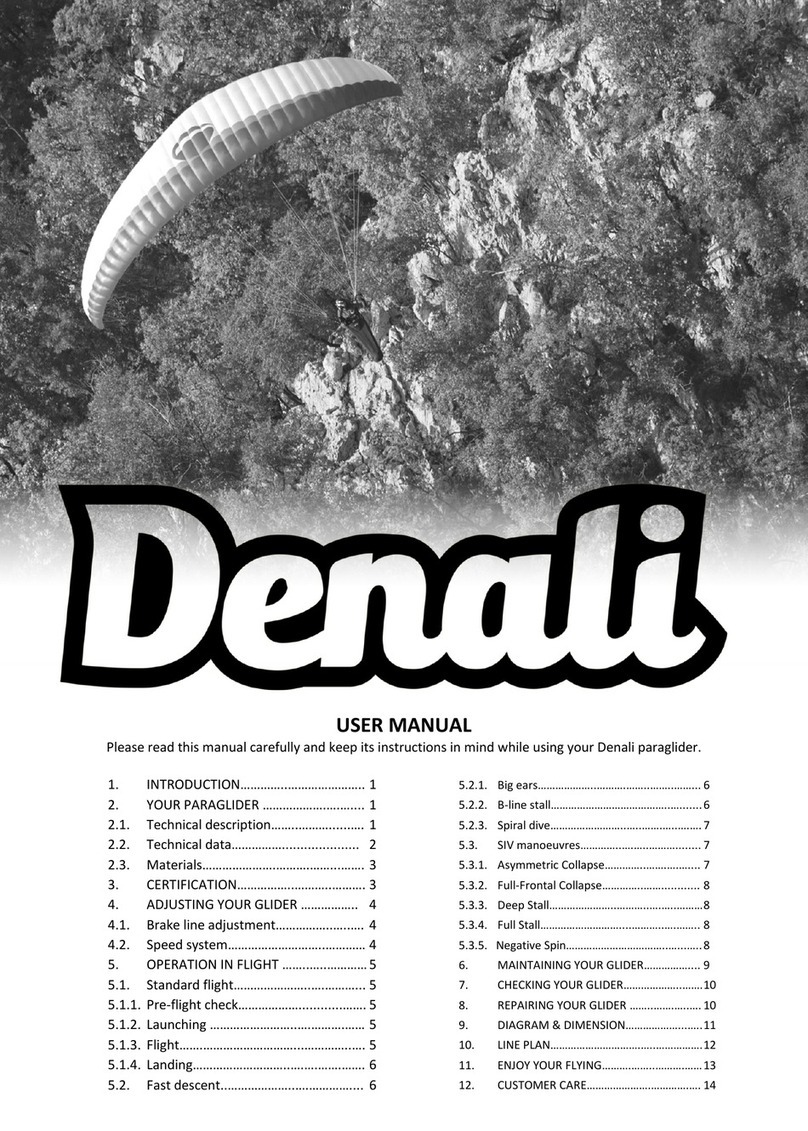
Gradient
Gradient Denali user manual
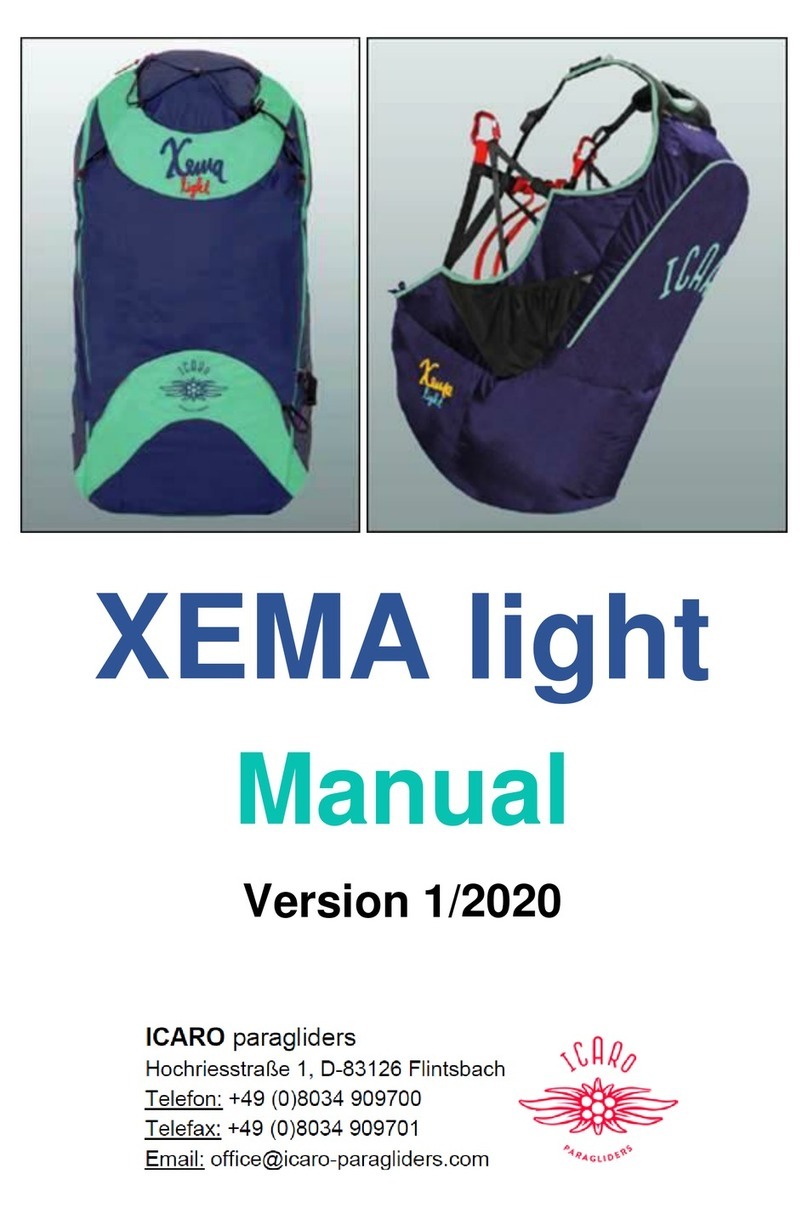
ICARO paragliders
ICARO paragliders XEMA light manual

Beech
Beech Beechcraft Bonanza V35 Pilot operating handbook

Light Sport Aviation
Light Sport Aviation EV-97 EUROSTAR SL MICROLIGHT Maintenance manual

